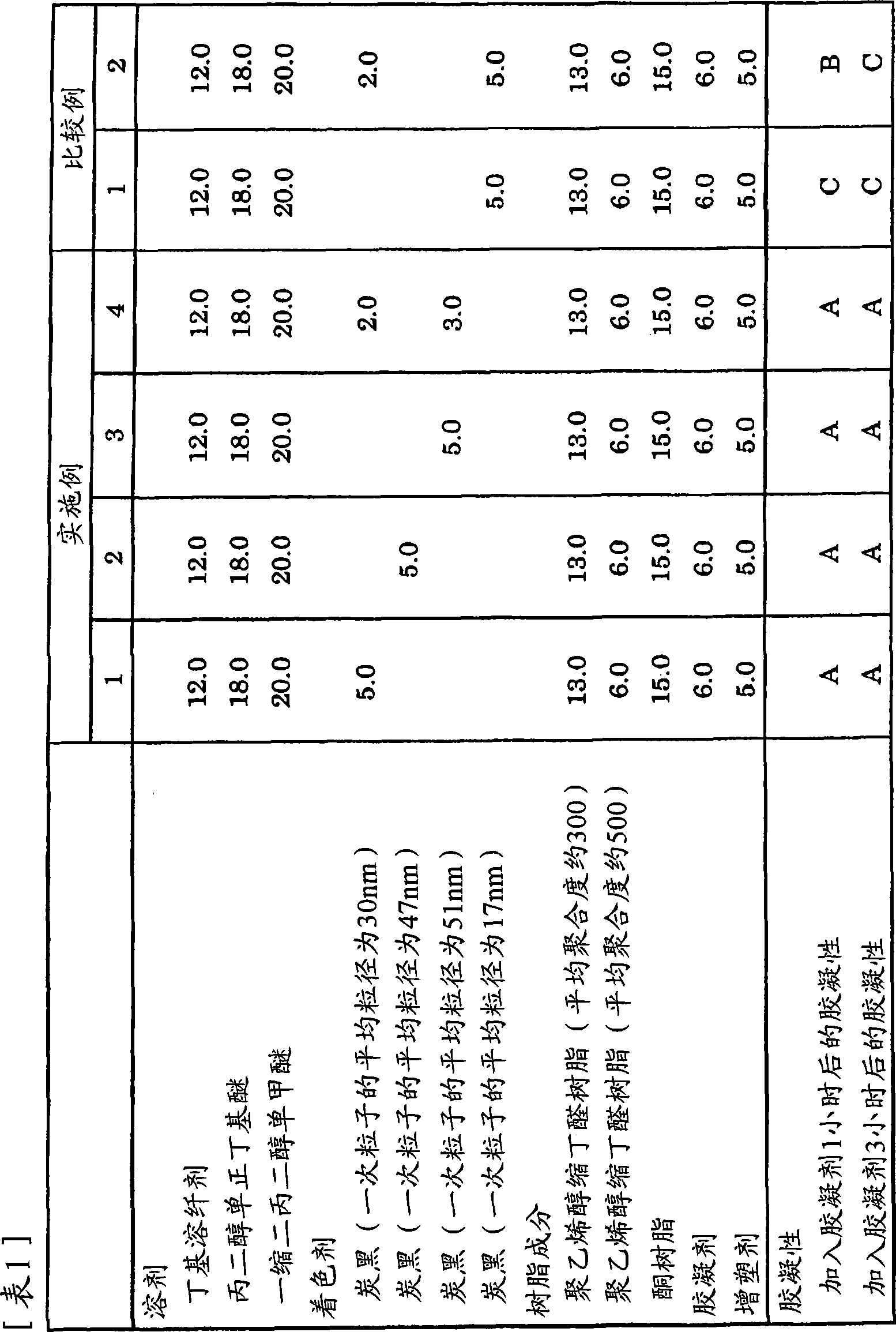Process for production of black crayon
A manufacturing method and technology of crayons, applied in the direction of pencil lead, non-active pencil, printing, etc., can solve the problems of poor gelation, inability to manufacture crayons stably, short heating time, etc., and achieve the effect of stable manufacturing
- Summary
- Abstract
- Description
- Claims
- Application Information
AI Technical Summary
Problems solved by technology
Method used
Image
Examples
Embodiment 1
[0030] A mixed solvent comprising 12.0 parts by weight of ethylene glycol monobutyl ether, 18.0 parts by weight of propylene glycol n-butyl ether and 20.0 parts by weight of dipropylene glycol monomethyl ether was heated to 30°C, and 5.0 parts by weight of phthalic acid was dissolved therein Dibutyl ester, and further, 13.0 parts by weight of polyvinyl butyral resin (MOWITAL B-20H manufactured by Kuraray, the average degree of polymerization is about 300) and 6.0 parts by weight of polyvinyl butyral resin (Kurare MOWITAL B-30H, the average degree of polymerization is about 500) dissolved.
[0031] Then, while heating the resin solution obtained as described above to 30° C., 5.0 parts by weight of carbon black (#30 manufactured by Mitsubishi Chemical Co., Ltd.) having an average particle diameter of primary particles of 30 nm was added thereto and dispersed, While heating to 130°C, 15.0 parts by weight of a ketone resin ("HIRA" manufactured by Hitachi Chemical Co., Ltd.) was ad...
Embodiment 2~4
[0034] Except having used the component shown in Table 1 in the amount shown in Table 1, it carried out similarly to Example 1, and obtained the crayon.
PUM
| Property | Measurement | Unit |
|---|---|---|
| particle diameter | aaaaa | aaaaa |
| hardness | aaaaa | aaaaa |
| particle diameter | aaaaa | aaaaa |
Abstract
Description
Claims
Application Information
 Login to View More
Login to View More - R&D
- Intellectual Property
- Life Sciences
- Materials
- Tech Scout
- Unparalleled Data Quality
- Higher Quality Content
- 60% Fewer Hallucinations
Browse by: Latest US Patents, China's latest patents, Technical Efficacy Thesaurus, Application Domain, Technology Topic, Popular Technical Reports.
© 2025 PatSnap. All rights reserved.Legal|Privacy policy|Modern Slavery Act Transparency Statement|Sitemap|About US| Contact US: help@patsnap.com

